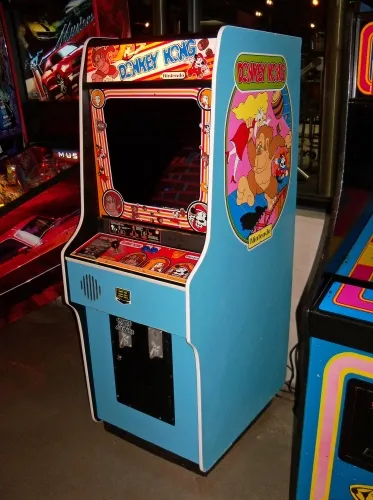
Here’s What Donkey Kong Bananza Looked Like On Switch 1
In a recent discussion, developers Kenta Motokura and director Kazuya Takahashi from Nintendo assured that Donkey Kong Bananza was initially conceived for the Switch 1.
Within a new Ask the Developer segment, new screenshots have been released that showcase the graphical differences between Switch 1 and Switch 2 for Bananza, with Kenta Motokura, Wataru Tanaka, and Daisuke Watanabe all sharing further insights on why the development transitioned to Nintendo’s new device.
To summarize, it’s established that the development crew began contemplating the move to Switch 2 in 2021. The primary thought was that if the new hardware could accommodate more items in the surroundings, the overall experience of destruction would become significantly more thrilling.
Subscribe to Nintendo Life on YouTube827k
Here’s what was articulated:
Motokura: We initially commenced the development of Donkey Kong Bananza on Nintendo Switch, but faced several obstacles. I believe it was around 2021 when we began considering transitioning the development to Switch 2.
Watanabe: Our initial focus was on how we could enhance what we’d originally constructed for Switch to exploit the capabilities of Switch 2. One of the most apparent advancements was that we could incorporate significantly more elements in the environment than before. The ability to add more items to the landscape not only improved the visual appeal of the game. More crucially, it expanded the number of things players could shatter, amplifying the excitement of being able to demolish virtually anything. This was closely connected to the core theme of destruction in the game. It convinced us that this game would be even more enjoyable if we developed it for Switch 2.
Tanaka: From a coding standpoint, voxel technology is well-suited for creating gameplay focused on destruction. Nevertheless, it also consumes a substantial amount of system memory, and we encountered the issue of Switch lacking sufficient memory to support all our ambitions.
Allow me to clarify with straightforward math. If you are instructed to double the dimensions of a 1 × 1 pixel image in both width and height, it results in a 2 × 2 image, equating to four times as many pixels. However, when doing the same with voxels, you must account for width, height, and also depth. Therefore, doubling all three dimensions results in 2 × 2 × 2, which means eight times the data. While it may seem straightforward to “double something,” the reality is that memory consumption, voxel density, and various processes consume substantially more resources. It was evident that the memory available on Switch would struggle to support that demand, and we felt that capturing the vast amount of terrain we aimed for in this game might have been impractical on that platform.
With the transition to Switch 2, we not only acquired more memory but also enhanced processing capabilities. This provided us the freedom to incorporate gameplay concepts we had previously discarded due to their complexity. When we proceeded to test it, we discovered that it could not only handle the intensive processing demands, but also operate at 60 fps. Elements we had given up on, such as explosions propelling large objects or causing collapses, became feasible. Designers were also free to add as many objects as they wished. There were numerous instances where we thought, “Now we can truly achieve this.”
So, with this context established, let’s explore how the game varies between the two consoles:
It doesn’t appear bad, right? However, it’s evident just how much Nintendo was able to infuse into the game environment with the Switch 2, in addition to some impressive crepuscular rays cascading down from above.
Donkey Kong Bananza is set to launch this week on 17th July 2025. It was recently reported that physical copies of the game have somehow surfaced, so be cautious of what you’re viewing online if you wish to avoid spoilers.
What are your thoughts on the comparison between Switch 1 and Switch 2 for DK Bananza? Feel free to share your insights in the comments below.
[source nintendo.com]
